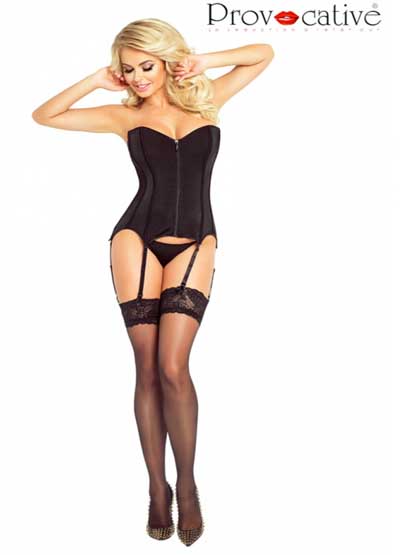A Guide To Ladies Corsets

The corset, a garment with a long and fascinating history, has undergone numerous transformations to symbolise empowerment and elegance in the modern world. Once viewed solely as a restrictive undergarment, corsets are now embraced for their ability to accentuate curves, improve posture, and even provide a sense of confidence. This blog post delves into the world of corsets, exploring the diverse designs, styles, fabrics and the potential benefits they offer.
The corset's origins can be traced back to ancient civilizations, where various body-shaping garments were employed. In Minoan Create, for instance, elaborate waist cinchers were worn by both men and women. However, the corset as we know it today emerged in Europe during the Renaissance. These early corsets were constructed with rigid materials like whalebone and metal, emphasizing a narrow waist and an elongated torso.
Throughout the 18th and 19th centuries, corsets remained a staple of women's fashion, evolving in silhouette and construction. The Victorian era is particularly associated with the tightly laced corset, often symbolising societal constraints on women. However, recent scholarship suggests that corsets offered freedom of movement and expression; some women even advocated for their use as a form of health support.
The 20th century saw a decline in the popularity of corsets as fashion shifted towards looser silhouettes. However, corsets never truly disappeared. They found new life in lingerie and burlesque performance, eventually experiencing a resurgence in mainstream fashion in the late 20th and early 21st centuries.
Modern corsets cater to a wide range of tastes and purposes. They are no longer solely defined by their historical association with restrictive silhouettes. Today's corsets are available in various designs, styles, and levels of construction, offering something for everyone, from the fashion-conscious individual to those seeking a touch of everyday comfort and support.
Here are some of the reasons why corsets continue to hold allure for modern women.
Body Contouring:
Corsets can effectively cinch the waist and enhance curves, creating a more hourglass figure. This can be particularly appealing for those who want to accentuate their natural shape or achieve a specific aesthetic.
Posture improvement:
Well-designed corsets can encourage better posture by gently realigning the spine and supporting the core muscles. This can lead to improved breathing and reduced back pain.
Comfort and support:
Corsets can provide a sense of core support, especially for those with back problems or those who participate in activities that require core strength. This feeling of support can enhance comfort and confidence.
Self-expression:
Corsets can be a powerful tool for self-expression. The wide variety of designs, styles and colours available allows individuals to showcase their unique style and personality.
The modern corset market offers a plethora of options to suit different preferences and body types.
Some of the most common designs and styles:
Overbust corsets - These corsets extend from just below the bust line down to the hips or waist. They are ideal for those who want to achieve a dramatic hourglass figure and can provide significant torso shaping.
Underbust corsets - As the name suggests, these corsets sit below the bust line and typically extend to the waist or mid-hips. They offer a more subtle shaping effect and are popular for everyday wear or for those who prefer a more comfortable fit.
Waist cinchers - These short corsets focus on cinching the waist and are often worn as lingerie or as a fashion statement over clothing.
Bustiers - Similar to overbust corsets, bustiers typically feature a sweetheart neckline and structured cups to support the bust. They can be worn as lingerie or as outerwear.
Within these broad categories, corsets come in a wide range of styles. Materials also vary greatly, with options including cotton, brocade, mesh, leather, and even latex. Closures can range from traditional laces to zippers and buckles, allowing for individual preferences in fit and adjustability.
Selecting the right corset:
Fit and comfort are key, the most important factor is to ensure a proper fit. Here are some tips for selecting the right corset.
Measure yourself, take accurate measurements of your bust, waist and hips to determine the appropriate size.
